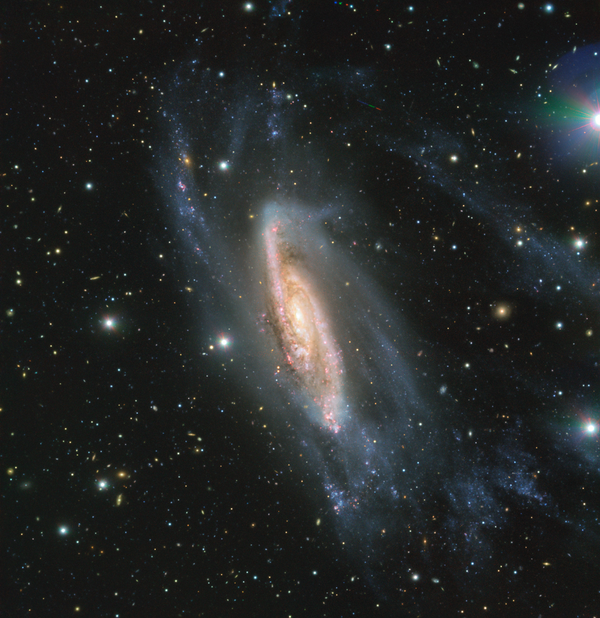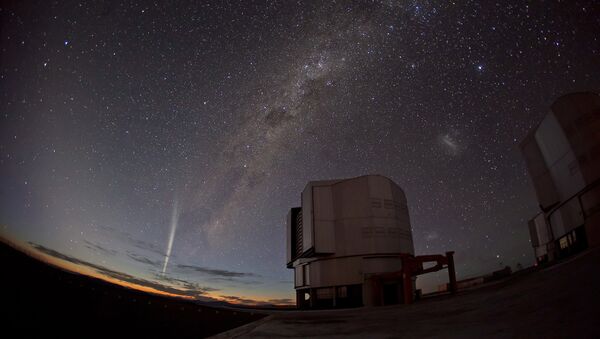According to ESO's release on the image, the photograph was snapped as part of the Cosmic Gems Program earlier this year when unsuitable weather prevented researchers from gathering scientific data.

The image released this week shows off the galaxy's arms outstretched and filled with groups of "hot, young stars" on its discs. The stretched appearance was likely the result of a "gravitational influence of a past galactic encounter." It was also noted that because NGC 3981 sits at an angle toward Earth, the photo allows star-gazers to get a look at the center of the galaxy.
However, the galaxy isn't the only enchanting feature that can be seen. Spotted in the foreground are several stars from the Milky Way and an asteroid making its way through space. The flying rock, seen in three different exposures, is visible as a faint blue, green and red line in the top right corner of the image.
Sitting some 65 million light-years from Earth in the constellation Crater, NGC 3981 is part of the NGC 4038 Group, which contains between 13 and 27 galaxies. The most well known of the group are the Antennae Galaxies.
Officials were able to obtain the image by using the Focal Reducer and Low Dispersion Spectrograph 2 instrument (FORS2) on ESO's Very Large Telescope (VLT). FORS2 is attached to VLT's Unit 1 Telescope.
Other footage released includes a survey map of NGC 3981 and a variety of videos offering a more in-depth look at the region.

